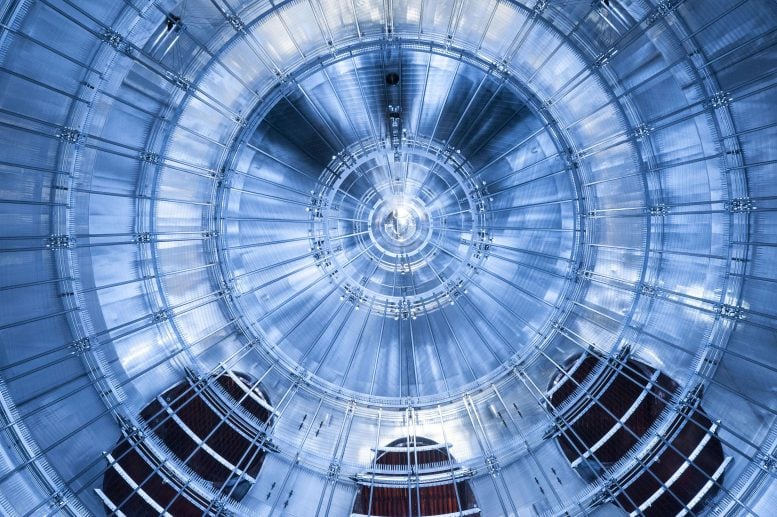
By Walter Beckwith, American Association for the Advancement of Science (AAAS) April 10, 2025
Collected at: https://scitechdaily.com/pinning-down-a-ghost-particle-neutrino-mass-measured-with-unprecedented-precision/
Scientists from the KATRIN experiment have achieved the most precise upper limit ever recorded for the mass of the mysterious neutrino – clocking in at less than 0.45 electron volts.
This breakthrough not only tightens the constraints on one of the universe’s most elusive particles but also challenges and extends the boundaries of the Standard Model of physics.
Breaking New Ground in Neutrino Mass Measurement
Researchers with the KATRIN (Karlsruhe Tritium Neutrino) experiment have reported the most precise upper limit yet on the mass of the neutrino: less than 0.45 electron volts (eV). That’s less than one-millionth the mass of an electron. This breakthrough further narrows the possible mass range for one of the universe’s most elusive particles and pushes the boundaries of physics beyond the current Standard Model.
Neutrinos are electrically neutral, extremely lightweight elementary particles – and the most abundant particles in the universe. They come in three types, or “flavors”: electron neutrinos, muon neutrinos, and tau neutrinos. These types can change into one another as neutrinos travel, a phenomenon known as oscillation. This behavior implies that neutrinos must have mass, contradicting the original assumption in the Standard Model that they are massless. Yet their exact mass remains one of the biggest open questions in particle physics.
Ghost Particles
Neutrinos have earned the nickname “ghost particles” because they are incredibly hard to detect–billions of them pass through your body every second without leaving a trace. These tiny, electrically neutral particles interact so weakly with matter that they can pass straight through planets, stars, and even entire galaxies. First predicted in the 1930s and confirmed decades later, neutrinos have since become central to some of the biggest mysteries in physics.
Beta Decay as a Window into Neutrino Mass
In this latest study, Max Aker and the KATRIN Collaboration present findings from the first five data-collection runs of the experiment. KATRIN estimates the neutrino’s mass by studying beta decay in tritium, a radioactive form of hydrogen. In this process, a neutron inside the tritium atom decays into a proton, releasing an electron and an electron antineutrino (the antimatter counterpart of the neutrino). By precisely measuring how the decay energy is split between the emitted electron and the antineutrino, scientists can infer the neutrino’s mass.
Between 2019 and 2021, the KATRIN team recorded the energy of about 36 million electrons – six times more data than in earlier runs. Their analysis led to the most stringent lab-based limit yet on the effective mass of the electron neutrino, placing it below 0.45 eV with 90% confidence. This marks the third major refinement of the mass limit and doubles the precision of previous results.
Toward the Future of Neutrino Science
“The neutrino mass measuring campaign of the KATRIN experiment will end in 2025 after reaching 1000 days of data acquisition,” writes Loredana Gastaldo in a related Perspective. “Analysis of the full data set gained from this grand project will allow for estimating the effective electron neutrino mass close to the projected value of 0.3 eV at 90% confidence level.”
Reference: “Direct neutrino-mass measurement based on 259 days of KATRIN data” 10 April 2025, Science.
DOI: 10.1126/science.adq9592

Leave a Reply